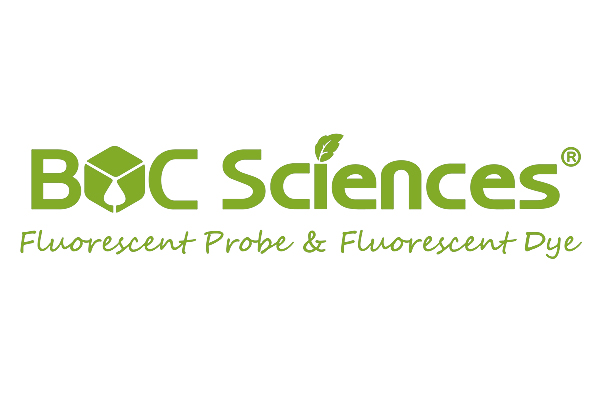RNA/DNA Labeling
-
 pCp-Cy5
pCp-Cy5Purity:
-

-

-

-

-

-

-

-

-

-

-

-

-

-

-

-

-

-

-

Background
BOC Sciences is committed to providing customers with high-quality RNA/DNA labeling stains.
RNA/DNA Labeling is a very important tool in modern molecular biology, biomedicine and other fields. The fluorescence of nucleic acid itself is very weak, and fluorescence technology cannot be directly applied to nucleic acid analysis, so DNA/RNA fluorescence stains must be introduced. Many types of fluorescent probes have been established according to the enhancement or quenching of fluorescence intensity of small molecule probes by nucleic acid.
Classification of RNA/DNA Labeling
The sites where the probe molecule binds to the nucleic acid are the base, phosphate skeleton and pentose ring of the nucleic acid. RNA/DNA consists of parallel stacked bases, polymerized anionic phosphate skeleton and two large and small grooves formed by nucleotide chains. There are three main ways of action: non covalent binding, covalent binding and shear action. At present, there are dozens of organic molecular dyes as nucleic acid probes, which can be divided into phenanthridine and acridine dyes, indole and imidazole dyes, carbocyanine cationic dyes, benzofuranone dyes according to the characteristics of probe molecular structure.
- Phenanthridine and Acridine Dyes
Phenanthridine and acridine dyes, including ethidium bromide, acridine orange and their dimers. Phenanthridine ring and acridine ring are chromophores or fluorophores of these dyes, which bind to DNA as embedding reagents. Ethidium ethidium homodimer strongly binds double stranded DNA (dsDNA) and oligonucleotides and shows significant fluorescence enhancement (more than 30 times).
- Indole and Imidazole Rings Dyes
The commonly used dyes are: phenol bis (benzimidazole) (Hoechst 33258), phenethoxy bis (benzimidazole) (Hoechst 33342), 41,6 - (diimidazolin-2) - 2-phenylindole (DAPI), etc. Dibenzimidazole dyes have good water solubility (can be prepared into 2% aqueous solution) and are relatively non-toxic; As a fluorescent probe, it can bond to small cells and emit fluorescence through blue grooves. Like benzimidazole dyes, DAPI binds to the small groove of DS DNA, selectively binds to A-T base cluster and emits blue fluorescence. The fluorescence emission wavelength of DAPI-RNA complex (about 500 nm) is larger than that of DAPI dsDNA complex (about 460 nm), and the quantum yield is only about 20%. After binding dsDNA with DAPI probe, the fluorescence was enhanced about 20 times.
- Carbocyanine Dyes
Carbocyanine dye is a new type of DNA molecular fluorescence probe and dyeing research. It has the following characteristics: it has high molar absorption coefficient in the visible region, low autofluorescence, and the quantum yield is less than 0.01 when it does not bind to nucleic acid; After binding with nucleic acid, the fluorescence intensity increases greatly (often more than 1000 times), and the quantum yield is as high as 0.9; It has a high affinity for nucleic acids, but hardly stained with other biological macromolecules. TOTO series dyes, also known as cyanine dye dimers, include TOTO, YOYO, BOBO and POPO dyes. They generally do not penetrate cells and have high affinity for nucleic acids. They are the most sensitive and affinity fluorescent probes for nucleic acid staining. Their sensitivity is sufficient to detect single nucleic acid molecules labeled by them by photoimaging and flow cytometry.
Application of RNA/DNA Labeling
In basic research, RNA/DNA labeling stains are used for recombinant gene library screening, DNA mapping, in situ hybridization, DNA sequencing and other analysis; In clinical diagnosis, RNA/DNA labeling stains are used for identification of various pathogens (bacteria and viruses), diagnosis of cancer and genetic diseases, DNA fingerprint analysis and so on. In addition, n RNA/DNA labeling stains have also been widely used in the study of chemical mechanism of environmental pollution, drug screening and food analysis. The various applications of RNA/DNA labeling stains are ever-changing, but most of the methods for the determination of RNA/DNA labeling stains are similar. They identify the target nucleic acid by hybridizing the RNA/DNA labeling stain with the complementary target nucleic acid and detecting the signal sent by the marker on the probe.
Resources

- Hoechst Dyes: Definition, Structure, Mechanism and Applications
- Mastering the Spectrum: A Comprehensive Guide to Cy3 and Cy5 Dyes
- Fluorescent Probes: Definition, Structure, Types and Application
- Fluorescent Dyes: Definition, Mechanism, Types and Application
- Coumarin Dyes: Definition, Structure, Benefits, Synthesis and Uses
- Unlocking the Power of Fluorescence Imaging: A Comprehensive Guide
- Cell Imaging: Definitions, Systems, Protocols, Dyes, and Applications
- Lipid Staining: Definition, Principles, Methods, Dyes, and Uses
- Flow Cytometry: Definition, Principles, Protocols, Dyes, and Uses
- Nucleic Acid Staining: Definition, Principles, Dyes, Procedures, and Uses
Online Inquiry

